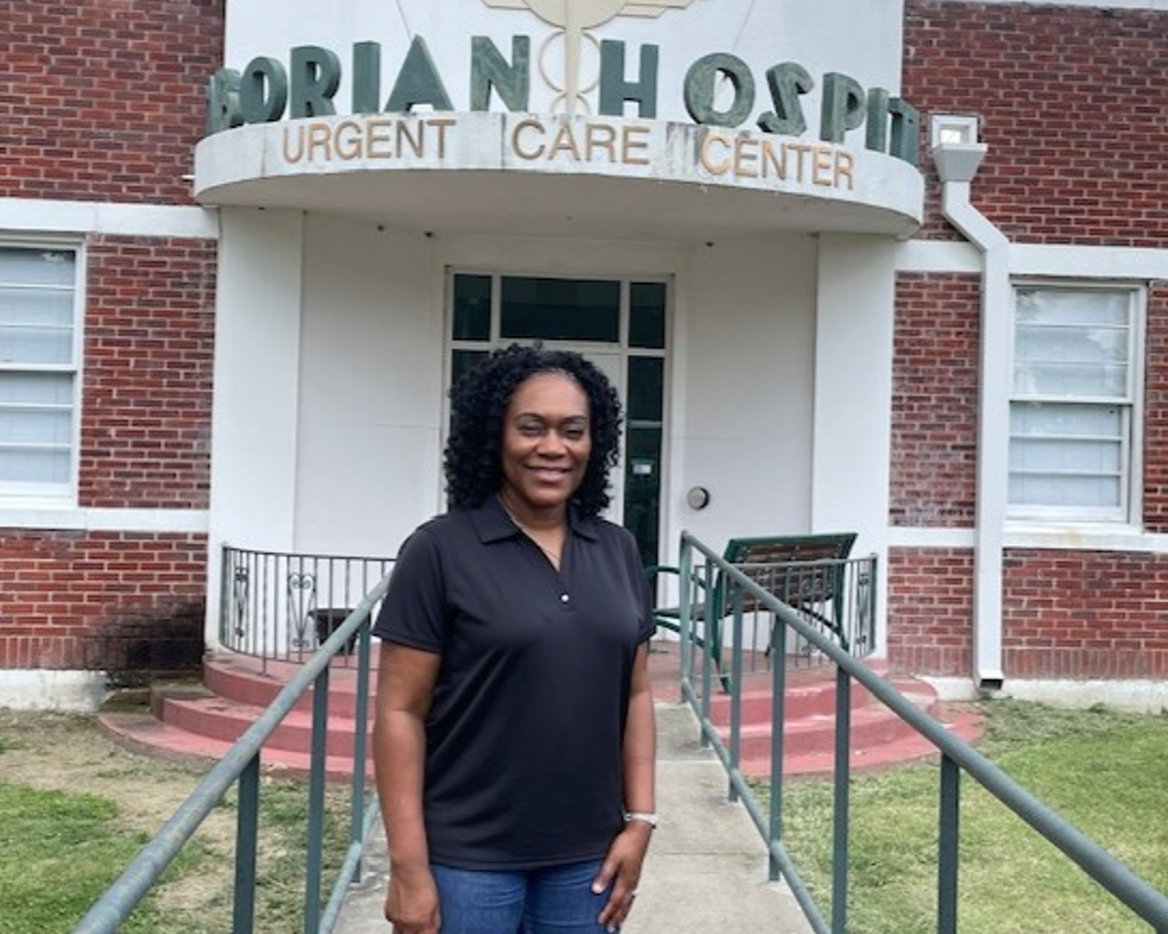During her fieldwork, L’Bertrice examined the overlapping social, historical, and political forces contributing to the premature deaths of Black men in Jackson and the Mississippi Delta. Her project focused on how systemic racism, shaped by political inequality, economic deprivation, and health disparities, had long undermined the health and survival of Black communities, particularly Black men.
In August, she explored the legacy of Taborian Hospital, a Black-run facility in Mound Bayou, Mississippi, once staffed entirely by Black doctors, nurses, and support staff. Though it had provided vital care to Black residents, it had received little to no government support and ultimately closed, drastically reducing access to care. The town of Mound Bayou, founded by her own great-great-grand uncle and other descendants of formerly enslaved people, stood as a testament to Black resilience and autonomy. L’Bertrice reflected on how its founding represented a radical vision of collective health, safety, and dignity for Black families.
She also revisited the lives and legacies of civil rights leaders like Medgar Evers and Dr. T.R.M. Howard, who had advocated for racial justice and Black health. Their efforts, though often met with violent resistance, underlined how deeply health disparities were rooted in political and social structures designed to harm Black men.
In September, she documented what she described as visual artifacts of medical apartheid: abandoned clinics, inaccessible health centers, and community-based memorials that together illustrated the continued crisis of health access in Mississippi. These images reflected a health system that still failed to serve Black residents equitably, particularly men, who remained at higher risk due to structural racism and compounded social disadvantage.
October’s fieldwork brought her to the story of James Chaney, a civil rights worker assassinated during Freedom Summer for registering Black voters. Alongside photos of the jail cell that once held Chaney and fellow activists, and images of Diane Nash and John Lewis in action, L’Bertrice traced how Black men’s lives had long been devalued by political systems determined to suppress their power and silence their voices. These histories were not distant—they remained palpable in the political, health, and social structures still governing Mississippi today.
By November, she turned to her research's symbolic and emotional dimensions. At the Mound Bayou Museum, she encountered an artifact titled Freedom and Hope, representing Black men's aspirations for a better future. Though many of their hopes had been obstructed by economic hardship, poor health infrastructure, and systemic violence, the spirit of resistance remained. The artifact stood as a quiet declaration that Black lives and Black futures mattered.
Throughout her fieldwork, L’Bertrice came to one enduring insight:
“The vestiges of white supremacy still affect the Black community to this day. The Black community experiences the risks associated with being Black. However, the risks faced by Black men are increased due to the dehumanization of their identity. As race is a social construct, Black men experience poor health outcomes and shorter life expectancy as a result of systemic racism's influences on social determinants of health and health policies (structural racism) in Jackson, Mississippi."
Her work reminds us that public health cannot be disentangled from history. It must reckon with the weight of what has been denied, destroyed, or silenced. In chronicling the layered injustices—and enduring hopes—of Black men in Mississippi, L’Bertrice is not just uncovering a past. She is charting a path forward.
